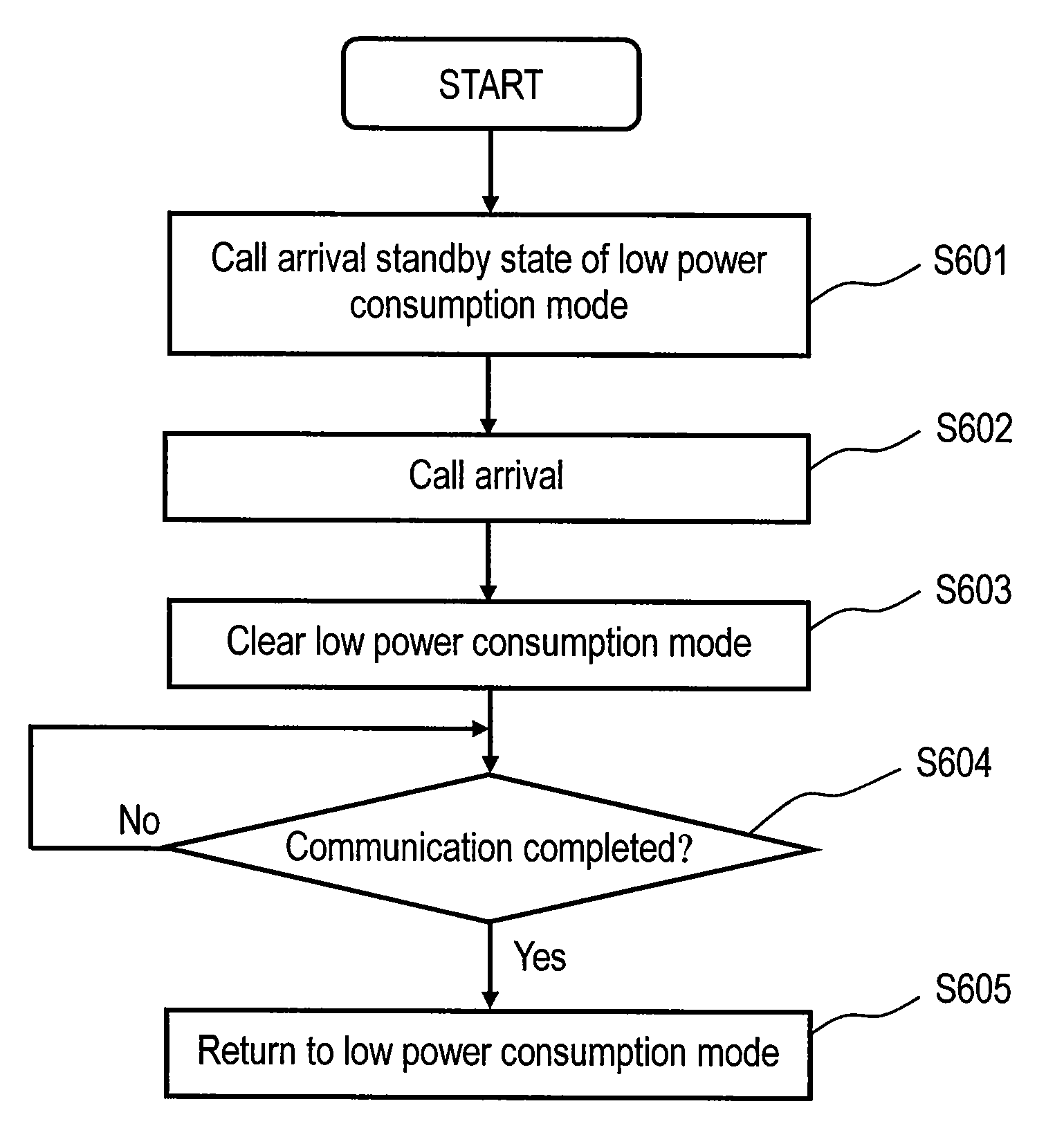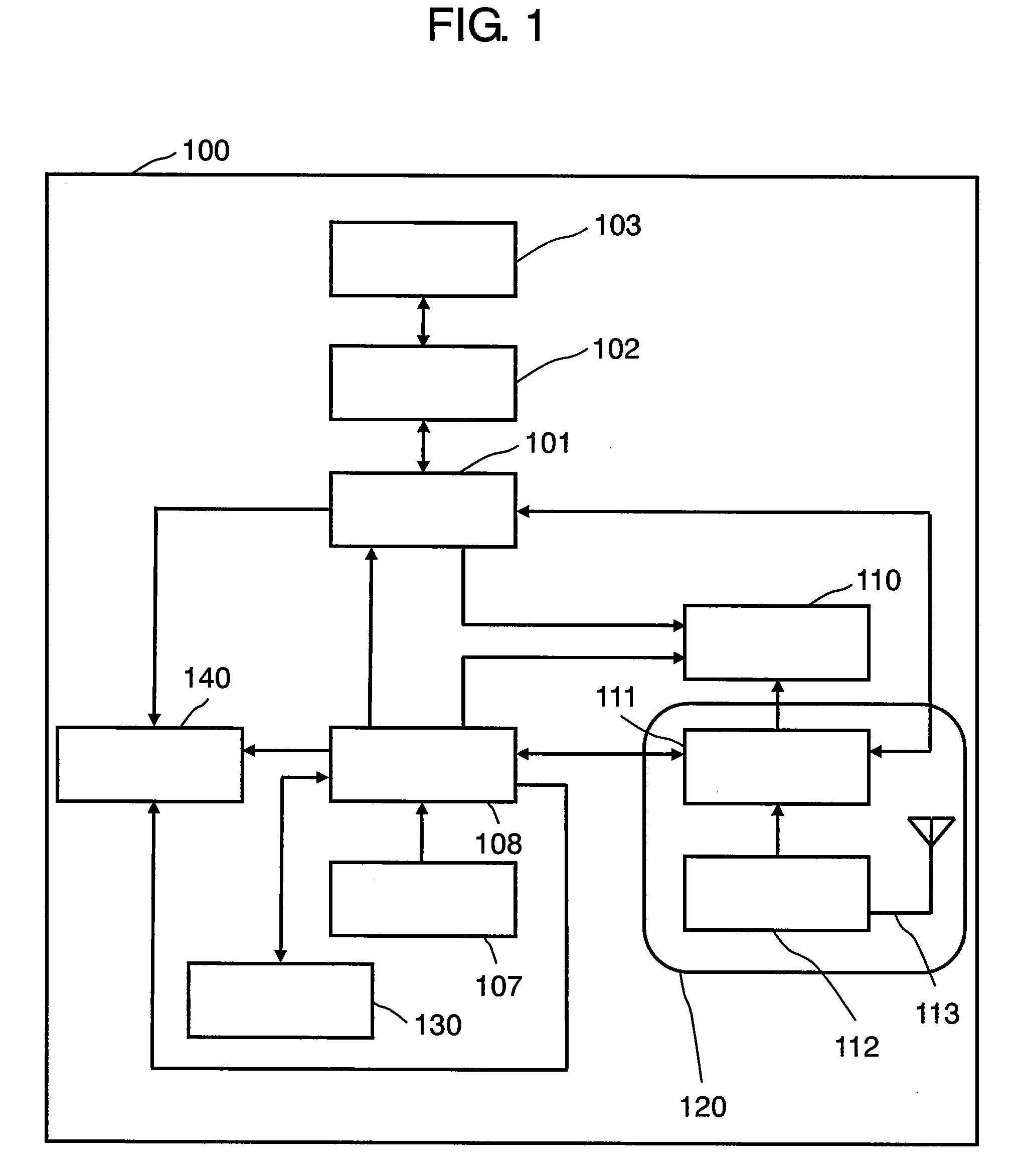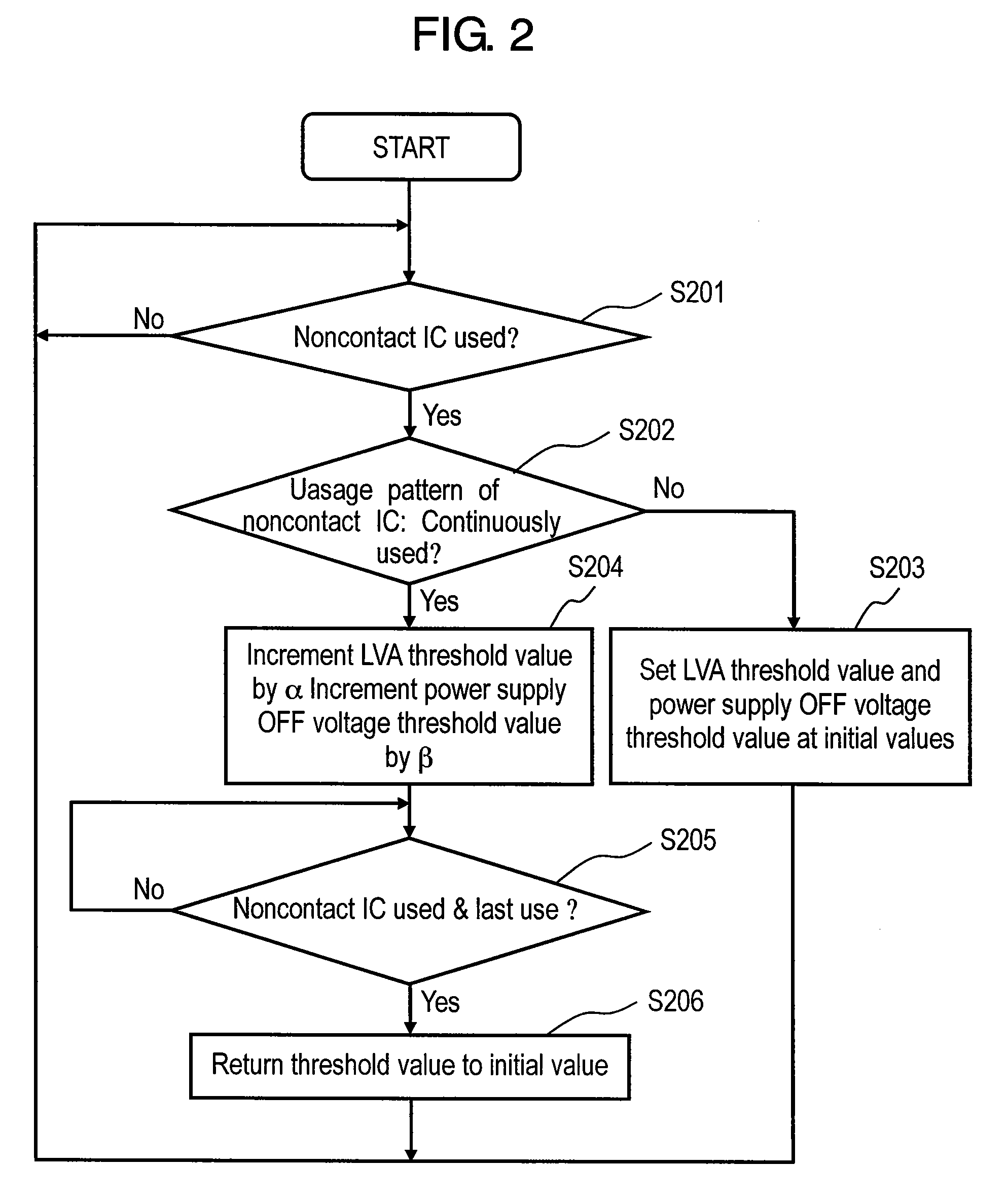Portable terminal device
a terminal device and portability technology, applied in power management, near-field systems using receivers, high-level techniques, etc., can solve the problems of user inability to go out of the station or the premise, non-contact ic function cannot be used, non-contact ic cannot be used, etc., to achieve the extension of available time and estimated available time
- Summary
- Abstract
- Description
- Claims
- Application Information
AI Technical Summary
Benefits of technology
Problems solved by technology
Method used
Image
Examples
first exemplary embodiment
[0038]A portable terminal device of exemplary embodiment 1 will be described hereinafter with reference to the accompanying drawings. In exemplary embodiment 1, the operable time of the noncontact IC is extended, by varying a predetermined voltage for putting the portable terminal device into an LVA state and a predetermined voltage for stopping power supply to the portable phone function. Here, the former voltage is hereinafter referred to as “power supply OFF voltage threshold value”, and the latter voltage is hereinafter referred to as “LVA threshold value”.
[0039]FIG. 1 is a block diagram showing a configuration of a portable terminal device in accordance with exemplary embodiment 1. Portable terminal device 100 of exemplary embodiment 1 has noncontact IC 101, high frequency modulating / demodulating section 102, loop antenna 103, battery 107, control section 108, main display section 110, sub display section 140, radio communication section 120, and camera 130. Radio communication...
second exemplary embodiment
[0055]Exemplary embodiment 2 will be described hereinafter. A portable terminal device of exemplary embodiment 2 determines whether or not to set low power consumption mode in response to the usage pattern or the like of a noncontact IC. A basic configuration of the portable terminal device of exemplary embodiment 2 is the same as that of exemplary embodiment 1, so that description of the block diagram of embodiment 2 is omitted.
[0056]FIG. 5 is a flowchart showing an operation of the portable terminal device of exemplary embodiment 2. In exemplary embodiment 2, definition of single use, continuous use, and last use is the same as that of exemplary embodiment 1.
[0057]First, it is determined whether or not the noncontact IC has been used in step S501. When the noncontact IC has been used, the usage pattern of the noncontact IC is determined in step S502. When the usage pattern of the noncontact IC is single use, the process returns to step S501. When the usage pattern is continuous us...
third exemplary embodiment
[0062]A portable terminal device of exemplary embodiment 3 has a power supply selecting section for noncontact IC use, and can select power supply by a battery or by conversion from the alternating current received by a loop antenna to direct current.
[0063]FIG. 8 is a block diagram showing a configuration of a portable terminal device in accordance with exemplary embodiment 3. Portable terminal device 300 has noncontact IC 101, high frequency modulating / demodulating section 102, loop antenna 103, alternating-current detecting section 701, direct-current converting section 702, power supply selecting section 703, input section 704, battery 107, control section 108, display section 110, and radio communication section 120. Radio communication section 120 has radio communication control section 111, transmitting / receiving section 112, and antenna 113. Elements similar to those in portable terminal device 100 of embodiment 1 are denoted with the same reference marks, and the description...
PUM
 Login to View More
Login to View More Abstract
Description
Claims
Application Information
 Login to View More
Login to View More - R&D
- Intellectual Property
- Life Sciences
- Materials
- Tech Scout
- Unparalleled Data Quality
- Higher Quality Content
- 60% Fewer Hallucinations
Browse by: Latest US Patents, China's latest patents, Technical Efficacy Thesaurus, Application Domain, Technology Topic, Popular Technical Reports.
© 2025 PatSnap. All rights reserved.Legal|Privacy policy|Modern Slavery Act Transparency Statement|Sitemap|About US| Contact US: help@patsnap.com



